As the weather begins to turn colder, it is important for homeowners to take steps to prepare their slate roof for the winter season. Not only will this help to prevent potential damage to the roof and the rest of the home, but it can also save homeowners money on costly repairs in the future.
First, assess the damage.
Crucially, assess any damage to your slate roof as soon as possible to prevent further damage and potential leaks or other issues. If you are unsure of how to handle the damage, it is always best to consult with a professional roofing contractor for advice and assistance.
Check the flashing.
The condition of your roof's flashing should be checked. Flashing is a critical component of a slate roof, as it helps to prevent water from seeping into the home. If the flashing is damaged or missing, it should be repaired or replaced to ensure the roof is watertight.
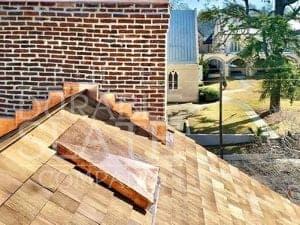
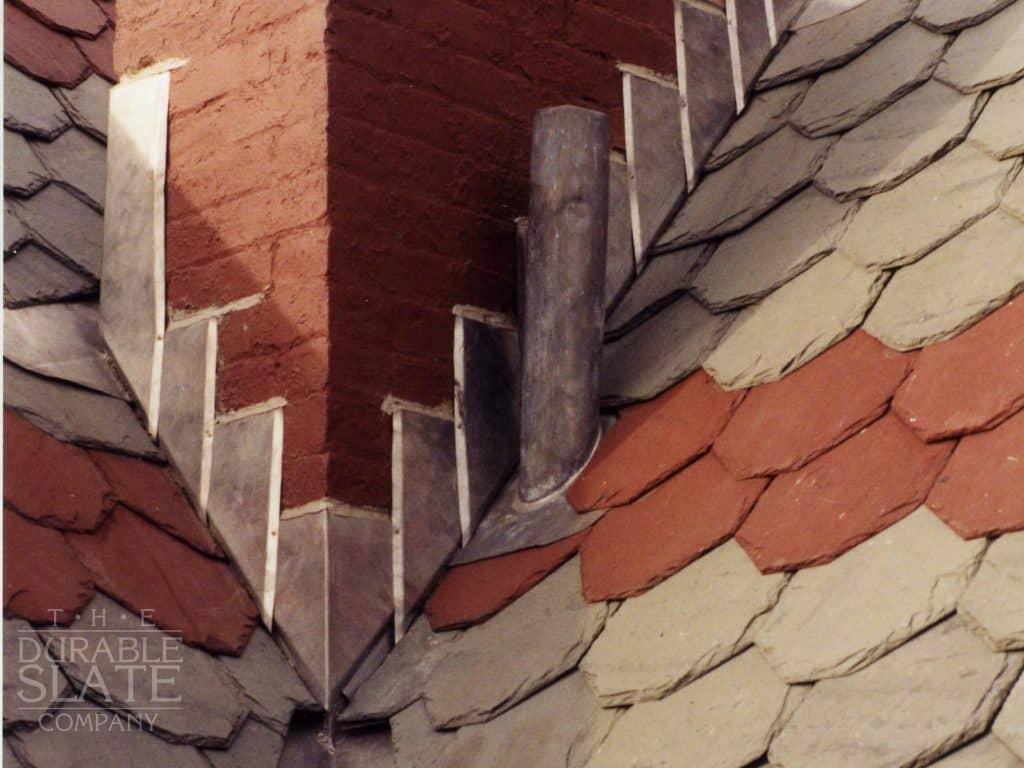
Roof flashing is a protective material installed along the edges of a roof and at other potential points of water penetration, such as around chimneys and vents. It is typically made of metal, such as aluminum or copper, and is designed to redirect water away from these vulnerable areas and prevent leaks.
Painting roof flashing can preserve its functional lifespan by providing an additional layer of protection against weathering and corrosion. The paint acts as a barrier against moisture and UV rays, which can cause the metal flashing to deteriorate over time. Additionally, paint can help it blend in with the rest of the roof and improve its aesthetic appeal, if so desired.
When painting flashing, be sure to use a high-quality, durable paint that is specifically designed for metal surfaces. This type of paint will provide the necessary protection against weathering and corrosion and will be able to withstand the extreme temperatures and exposure to moisture that roof flashing is subjected to.
Clear and clean your gutters.
Whether you’re likely to receive rain or snow, make sure your home's gutters are clean and free from clogs. Clogged gutters can cause water to overflow and potentially damage your home's foundation and landscaping. To prevent this, inspect your gutters for any visible debris or blockages. Remove any leaves, twigs, or other debris that you can easily reach by hand or with a small shovel or rake.
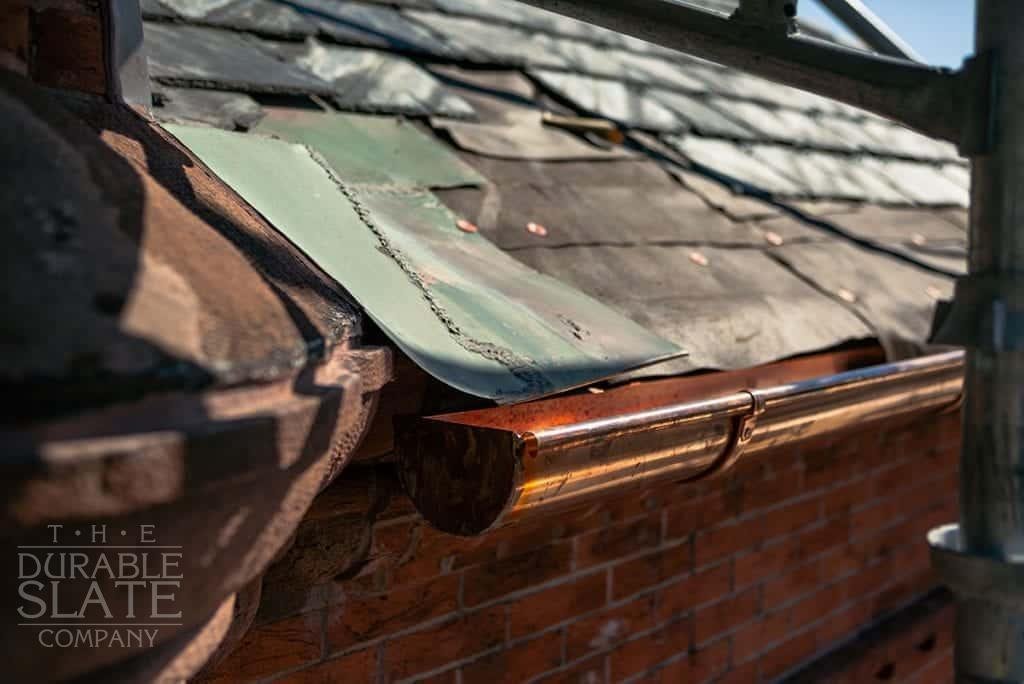
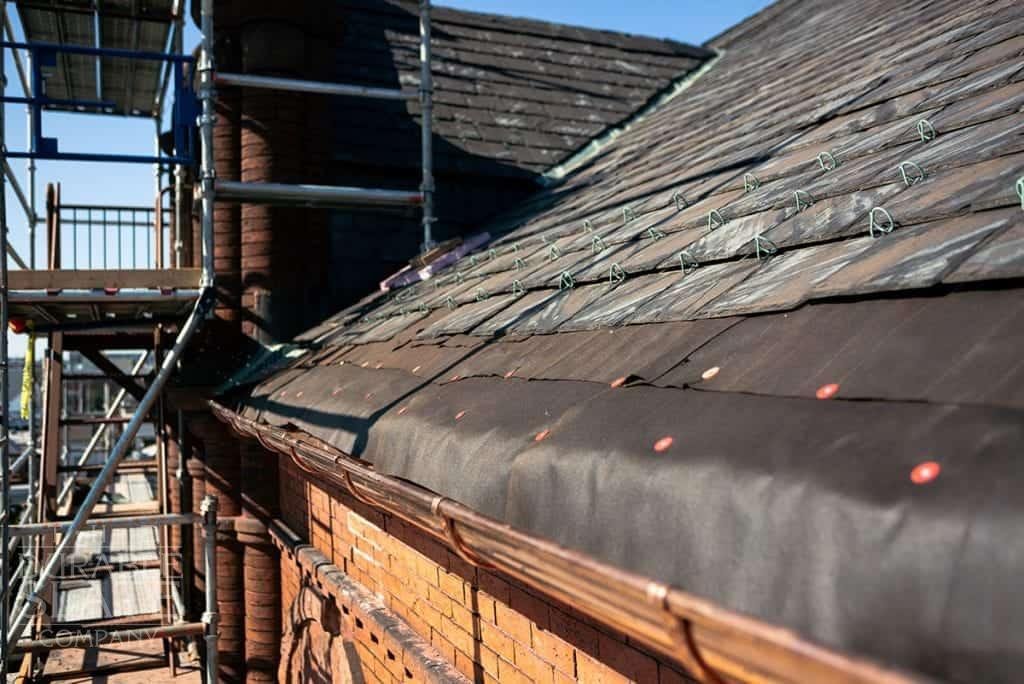
Once you have removed any visible debris, you can use a garden hose to flush out any remaining debris or clogs. Start at the top of the gutter and work your way down, using a steady stream of water to help break up any remaining clogs.
Consider adding snow guards.
As snow accumulates on your roof, the risk of avalanche and resultant injury increases. Snowguards are small metal or plastic devices that are attached to the roof of a building to prevent snow avalanches. These avalanches occur when large amounts of snow accumulate on a roof and suddenly slide off, potentially damaging the roof and anything in its path.
Adding snowguards to a slate roof can provide protection against these avalanches. Snowguards work by creating a barrier that prevents snow from sliding off the roof all at once. Instead, the snow is allowed to slowly melt or be removed in smaller, controlled amounts. This not only protects the roof itself, but also reduces the risk of injury to anyone below the roof.

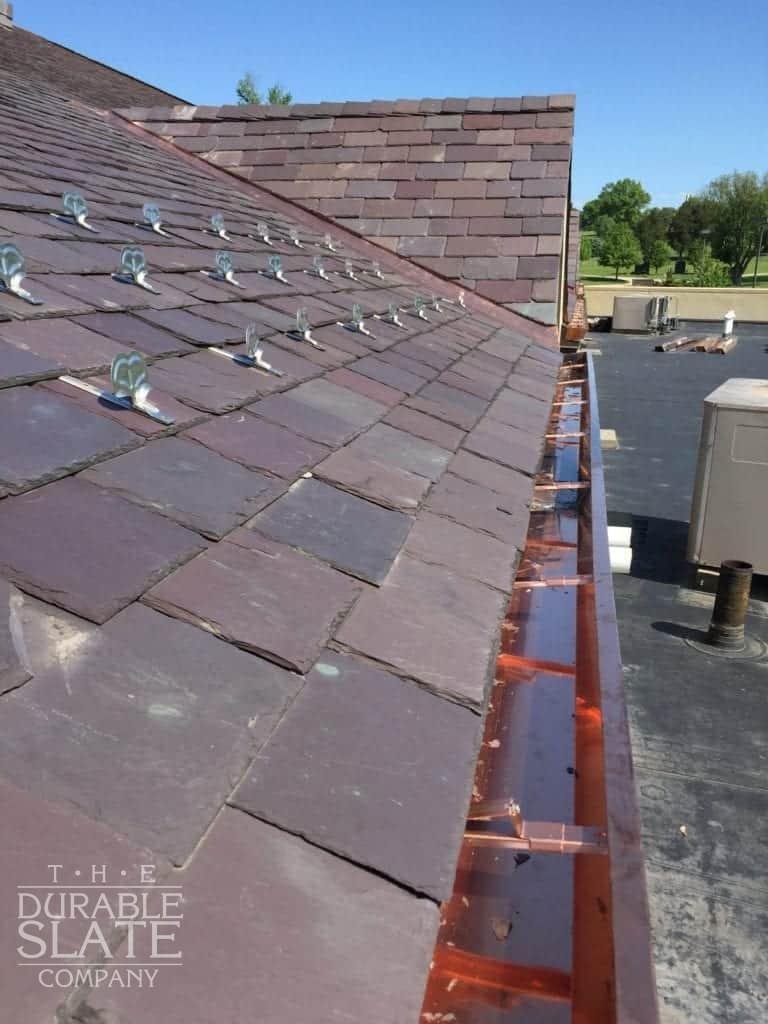
Snowguards are especially useful for buildings with steep or sloped roofs, as these are more likely to experience snow avalanches. They can also be beneficial for roofs with large, open areas or multiple peaks, as these areas tend to collect more snow.
Snowguards are also relatively easy to install and maintain. They can be attached to the roof deck using screws or nails. Sometimes adhesives or other methods are used on metal roofs and do not require regular maintenance once installed.
De-ice to prevent ice dams.
Finally, homeowners might consider installing roof de-icing cables or heat tape on their slate roof. These products can help to prevent ice dams from forming on the roof, which can cause damage to the slate tiles and other roofing materials. By taking the time to properly prepare their slate roof for winter, homeowners can help to prevent potential damage and save money on costly repairs in the future. It is always better to be proactive when it comes to protecting the roof of your home, and taking these steps now can help ensure that your slate roof remains in good condition throughout the winter season.


